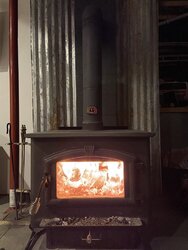If my stove has its own air damper, do I need one in my flue too to try and help retain heat longer and slow my wood use? Trying to find a way to possibly keep my heat in longer without making my fire smolder. Curious...
Last edited by a moderator:


